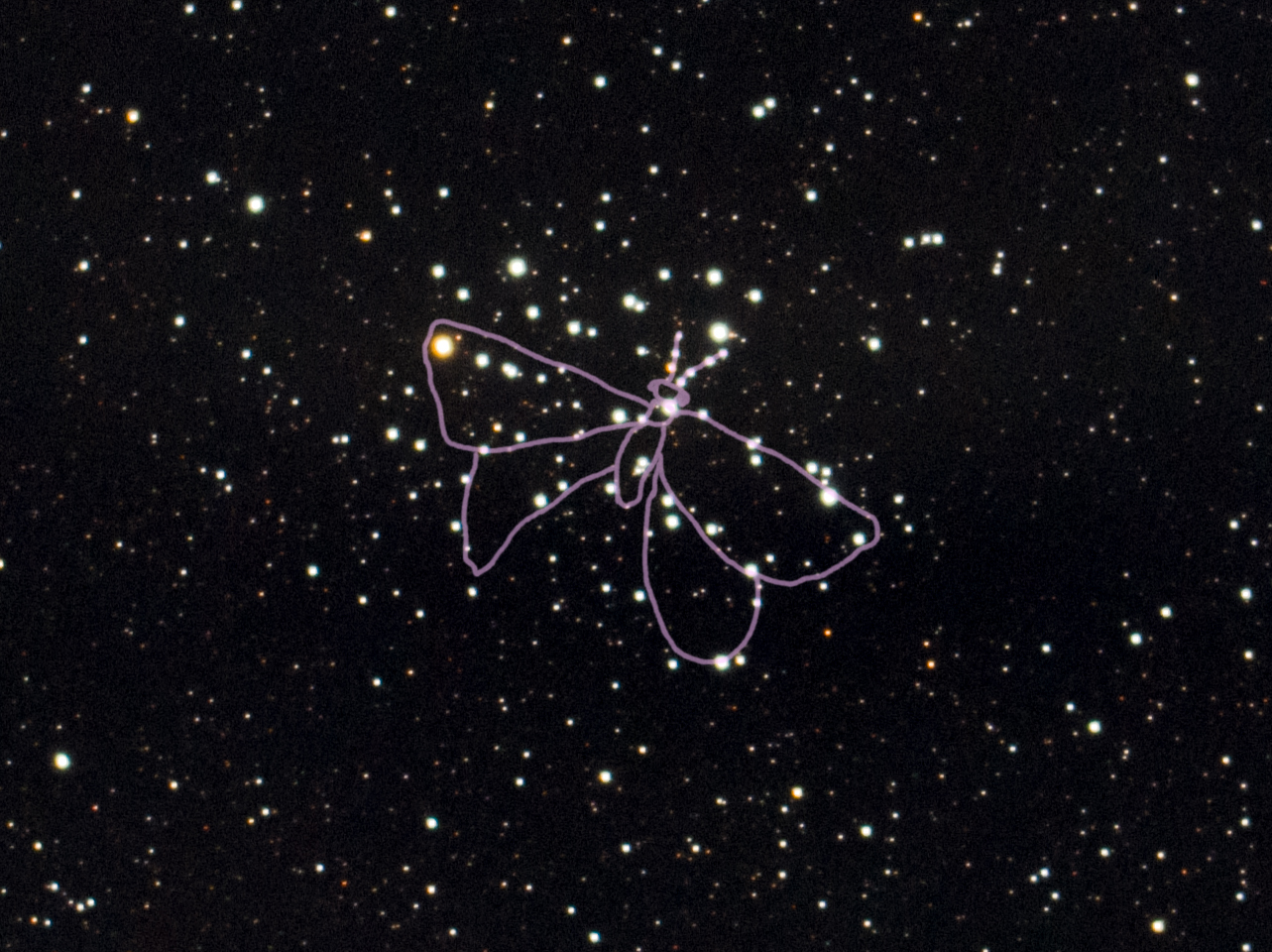

Does not include center bodies.įind a pattern for this and other great bevel clusters in "The Next Book", #6365.ĭelphi Tip: Always lay out bevel clusters on pattern before cutting glass to adjust for small differences. Details Butterflies represents transformation. M6, also known as NGC 6405, spans about 20 light-years and lies about 2,000 light years distant.
#BUTTERFLY CLUSTERS PLUS#
Includes wings to make three butterflies, plus wire. Explanation: To some, the outline of the open cluster of stars M6 resembles a butterfly. Pattern designed by Glassmith Studios, and available by permission on .Įach butterfly cluster is 4" wide and 2-3/4" tall. Monarch butterflies form dense clusters in their overwintering colonies in the mountains of central Mexico, where forest cover provides protection from. Enlarge pattern to fit the size of the cluster.
#BUTTERFLY CLUSTERS DOWNLOAD#
Use your own scrap glass to make the center bodies.Ĭlick on "View User Manual" to download a pattern that incorporates this bevel cluster. Includes wings to make three butterflies, plus wire. 12 pieces, enough for 3 butterflies (blue, green and clear). Each butterfly cluster is 4" wide and 2-3/4" tall. NGC 6416 is the open cluster and the center left of the image. At -32 degrees declination, it barely reaches an altitude of 18 degrees from my imaging site. Sorry, the comment form is closed at this time.Add color and texture to your next stained glass panel with beautiful, colorful butterflies featuring the "Jack Frost" texture of glue chip on the face of each wing. M6 (NGC 6405, Collinder 341, the Butterfly Cluster and others) is a bright open cluster located approximately 1,600 light-years away in Scorpius. This photo is created by images taken in June 1995 at the Burrell Schmidt telescope of Case Western Reserve University’s Warner and Swasey Observatory, during the Research Experiences for Undergraduates (REU) program operated at the Kitt Peak National Observatory and supported by the National Science Foundation. The number of western monarch butterflies wintering along the California coast has plummeted to a new record low. You’ll see just a few dozen stars in binoculars, and perhaps 100 stars in a 6-inch scope. 19, 2015, file photo, shows a monarch butterfly in Vista, Calif. A little imagination reveals the butterfly’s “antennae” to the northeast. A glance through a small telescope reveals why it is called the Butterfly Cluster: at 40-50x, the cluster has 3 bright stars running through the center (the body of the butterfly), with two irregular loops of stars on either side (the wings).

You can find this cluster about 4 degrees north of the bright star Shaula in the Scorpion’s tail, and just five degrees southeast of Messier 7, another open cluster. The cluster is estimated to be about 100 million years old. BM Scorpii, is classed as a semi-regular variable star, its brightness varying from magnitude +5.5 to magnitude +7.0 in a cycle of roughly two years. The Butterfly Cluster (also known as Messier 6 or NGC 6405) is a bright open star cluster of some 12 light-years across, located around 1,600 light-years. Butterflies are especially attracted to the eye-catching star-shaped flowers. Find high-quality stock photos that you wont find. Most of them are young, hot blue stars but the brightest member (on the edge of the butterfly’s left wing) is an orange giant star, called BM Scorpii (HD 160371), which contrasts sharply with its blue neighbors in photographs. Butterfly appeal: Flower clusters bloom profusely all summer long, providing a consistent nectar source for a wide range of pollinators. Search from 626 Monarch Butterfly Cluster stock photos, pictures and royalty-free images from iStock. The Butterfly Cluster contains probably a little more than 300 stars, although only 80 have been identified. Members of this cluster were formed in the same giant molecular cloud and are still loosely gravitationally bound to each other. Il primo video promo targato Butterfly Cluster Continuate a seguirci per le prossime date, che data la situazione di emergenza, vi sveleremo man mano. The cluster lies near the border of the constellation of Sagittarius, what makes it the Messier Object that is the closest to the center of the Milky Way. Its name derives from the vague resemblance of its shape to a butterfly. M6 is a superb bright naked eye open cluster in the constellation of Scorpius thats also known as the Butterfly Cluster. The Butterfly Cluster (also known as Messier 6 or NGC 6405) is a bright open star cluster of some 12 light-years across, located around 1,600 light-years away from Earth in the southern constellation of Scorpius (the Scorpion). Image Credit: N.A.Sharp, Mark Hanna, REU program/NOAO/AURA/NSF


 0 kommentar(er)
0 kommentar(er)
